When it comes to equine beauty, few breeds showcase color diversity quite like the American Quarter Horse. As America’s most popular horse breed, understanding quarter horse colors goes beyond aesthetics—it’s essential knowledge for breeders, competitors, and enthusiasts alike. In this comprehensive guide, we’ll explore seven breathtaking quarter horse colors, the fascinating genetics behind them, and how to avoid common color identification mistakes that even experienced horse people make.
Understanding Quarter Horse Colors: A Brief Overview
The American Quarter Horse Association (AQHA) recognizes 17 different coat colors, but quarter horse colors vary far beyond these official designations when we consider the influence of dilution genes, modifiers, and patterns. Quarter horse color genetics can be complex, yet understanding the basics helps appreciation of these magnificent animals.
What makes quarter horse colors so diverse? The answer lies in their genetic makeup. Different combinations of base colors, dilution genes, and modifiers create the stunning array of quarter horse coat colors we see today.
Before diving into specific quarter horse colors, it’s important to understand that all horse colors derive from just two base pigments:
- Eumelanin: The black pigment
- Pheomelanin: The red pigment
How these pigments express themselves—and how they’re modified by various genes—creates the quarter horse color chart spectrum we’ll explore.
1. Bay: The Classic Quarter Horse Color

Bay ranks among the most common quarter horse colors, but its popularity doesn’t diminish its beauty. This quarter horse color features a reddish-brown body with black “points”—mane, tail, lower legs, ear tips, and sometimes muzzle.
Bay quarter horse colors result from a base red coat affected by the Agouti gene, which restricts black pigment to the extremities. The shade of bay can vary considerably:
- Light bay: Lighter reddish-brown body
- Blood bay: Rich, deep red body
- Dark bay: Deep brown body that can sometimes be mistaken for black
Many legendary quarter horses have sported bay coats, including the famous “Doc Bar,” whose genetic influence continues through generations of performance horses.
Misidentification Alert: Dark bay quarter horses are frequently mislabeled as black. The difference? Look for reddish hairs, particularly in bright sunlight or around the muzzle and flanks.
2. Buckskin: Golden Excellence

Buckskin quarter horse colors represent one of the most sought-after variations in the breed. These golden beauties result from a bay base affected by a single copy of the cream dilution gene.
A true buckskin quarter horse color displays:
- A golden or tanned body ranging from light yellow to deep gold
- Black points (mane, tail, and lower legs)
- Often a dorsal stripe
Buckskin quarter horses combine striking looks with the breed’s renowned versatility. The legendary “Poco Bueno” carried buckskin coloration, becoming one of the most influential quarter horse sires of all time.
Misidentification Alert: Buckskins are commonly confused with duns. The key difference? A true dun always has primitive markings including a dorsal stripe, while buckskins typically don’t (though some can carry a countershaded dorsal stripe that’s less defined).
3. Palomino: The Golden Glory
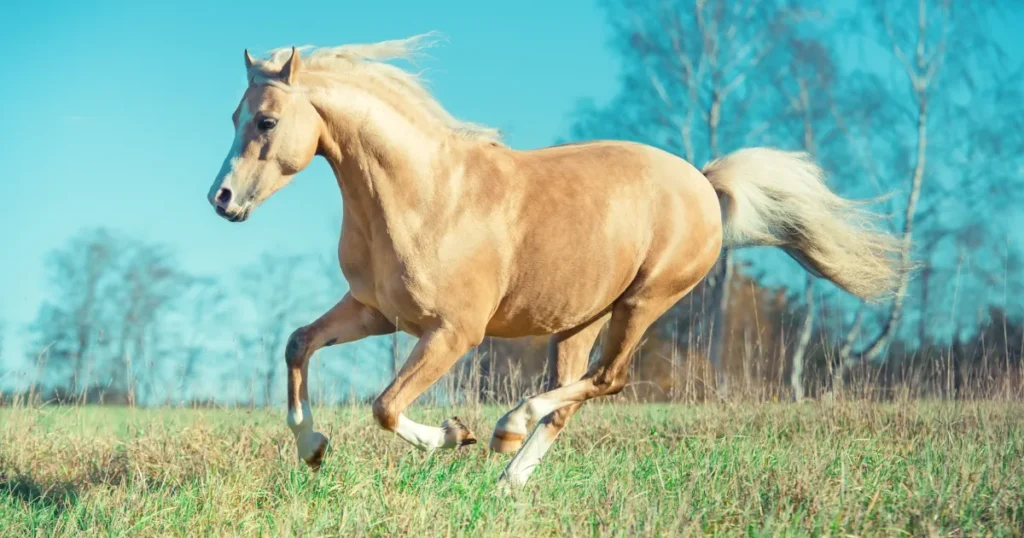
The quarter horse palomino color represents equine elegance at its finest—a golden body complemented by a white or cream mane and tail. This quarter horse color results from a chestnut base affected by a single cream dilution gene.
Perfect palominos display:
- Golden body color ranging from light gold to deep copper
- White or cream mane and tail (at least 85% white)
- No dark points like buckskins have
The quarter horse palomino color has captured human imagination for centuries, appearing in literature, film, and popular culture. The famous “Trigger,” Roy Rogers’ mount, was a palomino, though not a quarter horse.
Misidentification Alert: Quarter horse palomino colors can be confused with very light chestnuts or dark cremello. The key is looking at the mane and tail—palominos have white or cream, while chestnuts have manes and tails similar to their body color.
4. Roan: Nature’s Blend of Colors
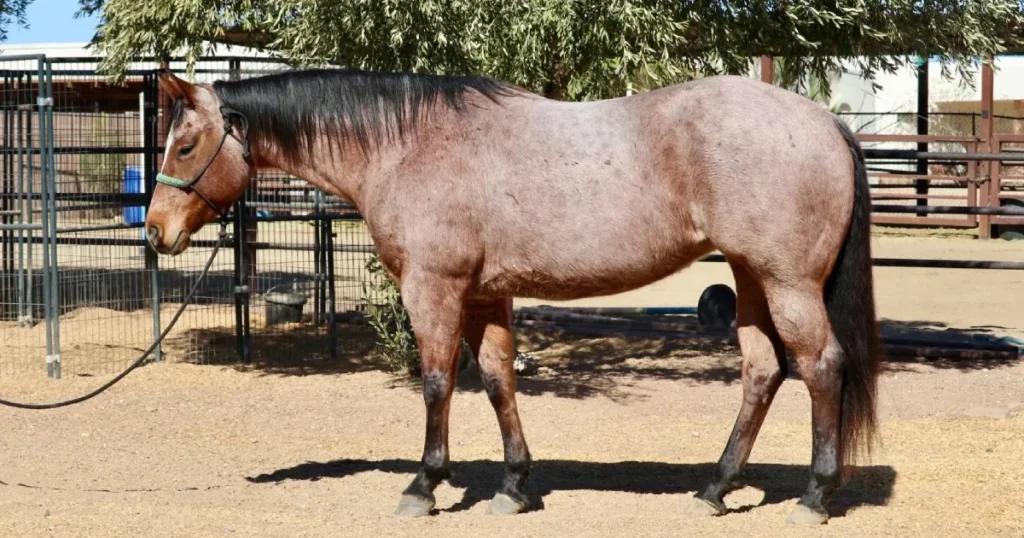
Quarter horse roan colors represent one of the most distinctive coat patterns in the equine world. Unlike solid colors, roans feature an even mixture of white hairs intermingled with a base color, creating a unique “frosted” appearance.
The three primary quarter horse roan colors include:
- Blue roan: Black base with white hairs (appears blue-gray)
- Red roan: Chestnut base with white hairs (appears strawberry or pinkish)
- Bay roan: Bay base with white hairs (appears reddish with dark points)
A fascinating aspect of quarter horse roan colors: the roan pattern typically doesn’t affect the head, mane, tail, or lower legs, creating a striking contrast between the body and extremities.
Misidentification Alert: Gray horses are often mislabeled as roan. The difference? Grays progressively lighten throughout their lives, while roans maintain consistent coloration after their first adult coat.
5. Dun: Primitive Perfection
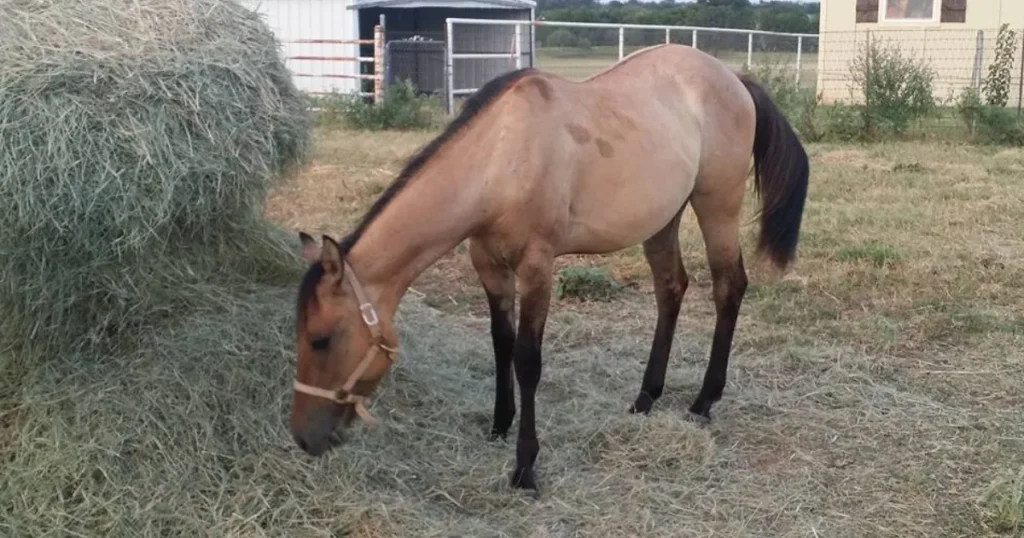
The dun quarter horse color carries ancient heritage, displaying primitive markings that harken back to wild ancestors. A dun gene dilutes the body color while leaving the points dark and adding distinctive primitive markings.
Quarter horse color genetics regarding dun are fascinating—this is a dominant gene that always shows when present. True duns always display:
- A dorsal stripe (dark line down the spine)
- Leg barring (horizontal stripes on the upper legs)
- Often shoulder stripes and cobwebbing on the face
Duns come in several variations:
- Red dun: Reddish body with red primitive markings
- Yellow dun: Yellow body with black markings
- Grulla: Mouse-colored body (black diluted by dun) with black markings
Misidentification Alert: Countershading on non-dun horses can sometimes resemble a dorsal stripe. True dun dorsal stripes are crisp, well-defined, and accompanied by other primitive markings.
6. Black: Elegant Simplicity

True black quarter horse colors demonstrate striking elegance. This quarter horse color occurs when a horse inherits the recessive “a” version of the Agouti gene, allowing black pigment to distribute evenly across the entire coat.
A genuine black quarter horse displays:
- Uniform black color without reddish or brownish tones
- Black mane and tail
- Black points
Black quarter horses often fade to a brownish hue when exposed to sunlight, a process called “sun fading.” This natural reaction doesn’t change the horse’s genetic color but can make identification challenging.
Misidentification Alert: Distinguishing between faded black and dark bay can be difficult. Check for reddish hairs in the flanks and muzzle—present in bays but absent in true blacks.
7. Sorrel/Chestnut: The Redheads
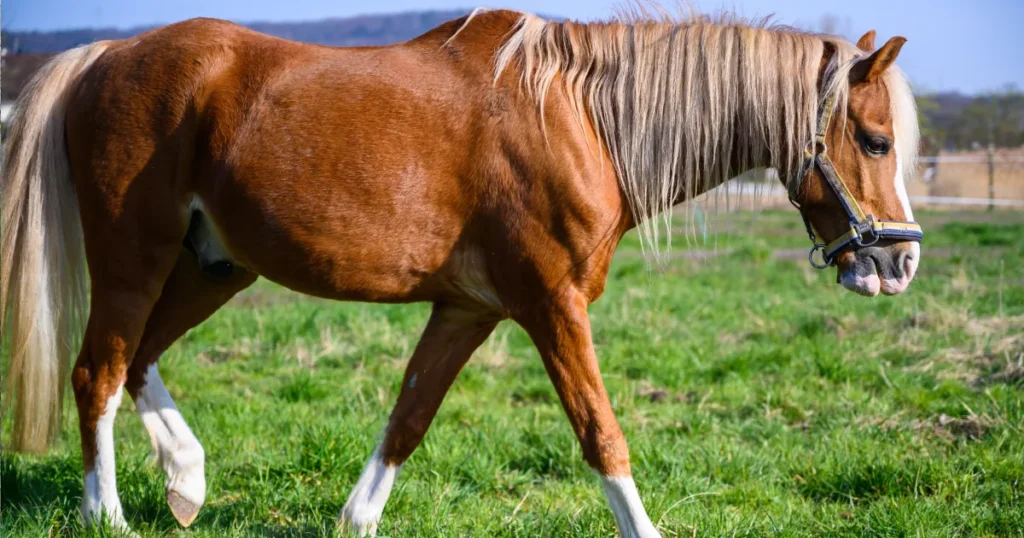
Sorrel represents the most common quarter horse color, encompassing the various shades of red without black points. In quarter horse color chart terminology, “sorrel” typically refers to lighter red shades, while “chestnut” indicates darker variations, but genetically, they’re identical.
These copper beauties display:
- Body colors ranging from light copper to deep liver
- Mane and tail of similar or slightly lighter/darker shade than the body
- No black points
The diversity within sorrel/chestnut quarter horse colors is remarkable—from bright copper penny shades to deep chocolate liver chestnuts with flaxen (lighter) manes and tails.
Misidentification Alert: Dark chestnuts can be mistaken for bay if they have slightly darker legs. The key difference? Bays have genuinely black points, while chestnuts have legs, manes, and tails in the same color family as their bodies.
Quarter Horse Color Genetics: Understanding the Science
Quarter horse color genetics fascinate both breeders and enthusiasts. While complicated in its entirety, understanding basic concepts helps appreciate how these stunning colors develop.
Base Colors and Modifiers
All quarter horse colors stem from two base colors affected by various modifying genes:
- Chestnut/Sorrel: The red base (genotype e/e)
- Black: The black base (genotype E/- with a/a)
The Agouti gene (A) modifies black pigment distribution:
- Present (A/-): Restricts black to points, creating bay
- Absent (a/a): Allows black distribution throughout, creating black
Dilution Genes
Several dilution genes create the spectacular array of quarter horse coat colors:
- Cream Gene (Cr):
- Single copy: Dilutes red to palomino or bay to buckskin
- Double copy: Creates cremello, perlino, or smoky cream
- Dun Gene (D):
- Dilutes the body while maintaining darker points
- Adds primitive markings
- Silver Gene (Z):
- Dilutes black pigment but not red
- Lightens black manes and tails to chocolate or silver
- Champagne Gene (Ch):
- Dilutes both red and black pigment
- Creates gold skin and amber eyes
Patterns and Special Modifiers
Beyond colors, quarter horses can display various patterns:
- Roan Gene (Rn):
- Adds white hairs throughout the body, sparing the head, legs, mane and tail
- Gray Gene (G):
- Progressive whitening over time
- All gray horses are born a different color
- White Patterns:
- Tobiano, overo, sabino, and splash white patterns
- Created by different genetic mechanisms
Understanding quarter horse color genetics helps breeders predict offspring colors and avoid misidentifications.
Quarter Horse Colors and Markings: Beyond the Basics
While color defines the overall appearance, quarter horse colors and markings add individual character. Common white markings include:
- Facial Markings: Star, stripe, snip, blaze, bald face
- Leg Markings: Coronet, pastern, ankle, sock, stocking
These white markings result from the uneven distribution of white spotting genes and don’t affect the horse’s base color classification.
Rare Quarter Horse Colors: Treasures of the Breed
While sorrels and bays dominate the quarter horse world, some quarter horse colors occur less frequently:
Cremello and Perlino
These double-dilutes result from two copies of the cream gene:
- Cremello: Double-dilute chestnut with pink skin and blue eyes
- Perlino: Double-dilute bay with pink skin and blue eyes
Grullo (also spelled Grulla)
This striking slate gray-blue color results from the dun gene acting on black:
- Blue-gray or mouse-colored body
- Primitive markings including dorsal stripe
- Black points
Smoky Black
This subtle variation occurs when a black horse carries a single cream gene:
- Appears as slightly lighter or brownish black
- Often indistinguishable from true black without genetic testing
These rare quarter horse colors often command premium prices from collectors and enthusiasts seeking something distinctive.
Most Common Quarter Horse Colors: The Popular Palette
According to AQHA registration statistics, the most common quarter horse colors in order of prevalence are:
- Sorrel/Chestnut
- Bay
- Black
- Palomino
- Gray
- Buckskin
- Roan varieties
- Dun varieties
These statistics reflect both natural genetic frequency and breeder preferences. Some bloodlines are known for specific quarter horse colors, reinforcing certain color prevalences within the breed.
Quarter Horse Color Chart: A Practical Guide
Professional breeders and registries use quarter horse color charts to accurately identify and document colors. These charts typically include:
- Standard color examples with photos
- Genetic notation for each color
- Common variations within each color category
For practical identification, observe these key areas:
- Body color in natural light
- Point color (mane, tail, legs)
- Presence of primitive markings
- Distribution of white hairs
- Eye color
- Skin color (particularly under white markings)
Tips for Identifying Quarter Horse Colors Correctly
Even experienced horsemen sometimes misidentify quarter horse colors. Follow these tips to improve accuracy:
- Examine horses in natural daylight
- Check multiple body areas, particularly those less sun-exposed
- Look for subtle primitive markings that might indicate dun factor
- Consider seasonal changes—many horses darken in winter coats
- When in doubt, genetic testing provides definitive answers
Remember that foal colors often change dramatically with maturity, particularly in the case of gray horses, which are born dark and progressively lighten.
Health Considerations Related to Quarter Horse Colors
Certain quarter horse coat colors correlate with health considerations:
- Horses with excessive white markings may be more prone to sunburn
- Double-dilutes like cremellos have pink skin requiring sun protection
- Overo patterns can be associated with Lethal White Syndrome when certain genes combine
- Some champagne dilutions may be mistaken for liver disease due to skin mottling
Understanding these correlations helps owners provide appropriate care for their colorful companions.
Quarter Horse Colors in Competition: Does Color Matter?
While quarter horse colors shouldn’t influence judging, subtle preferences sometimes emerge:
- Western pleasure classes often feature many palominos and buckskins
- Cutting and reining competitors frequently ride sorrels and bays
- Halter classes see success across all quarter horse colors
The horse’s conformation, ability, and training should always outweigh color considerations, but many riders admit to having color preferences when selecting prospects.
Preserving Color Heritage: Color-Focused Breeding Programs
Some breeders specialize in specific quarter horse colors, working to preserve and perfect particular variations:
- Foundation Quarter Horse breeders often focus on duns and grullos
- Some programs specialize in blue roan quarter horse colors
- Others concentrate on perfecting the golden quarter horse palomino color
These specialized programs help maintain color diversity within the breed while sometimes creating distinctive performance traits associated with certain color bloodlines.
Recommended Resources for Quarter Horse Color Information
External Resources
To deepen your understanding of quarter horse colors, consider these authoritative external resources:
- American Quarter Horse Association (AQHA) – The official breed registry provides definitive information on quarter horse colors and registration requirements.
- UC Davis Veterinary Genetics Laboratory – Offers genetic testing services and educational materials on horse color genetics.
- Equine Color Genetics by Dr. Phillip Sponenberg – The definitive scientific resource on horse color genetics.
- Horse Color Explained by Jeanette Gower – A practical guide to understanding horse colors and patterns.
- Extension Horse – Research-based information about equine colors and genetics from university extension programs.
Internal Resources
Explore these related articles on our website to expand your equine knowledge:
- The Complete Guide to Horse Breeds – Discover how quarter horses compare to other popular breeds.
- Horse Grooming: Essential Tips for a Shiny Coat – Learn how to enhance your quarter horse’s natural color.
- Understanding Horse Genetics: Beyond Color – Explore genetic factors that influence more than just coat color.
- Choosing the Perfect Horse: A Buyer’s Guide – Important considerations beyond coat color when selecting your next equine partner.
- Horse Health: Preventative Care Essentials – Critical health information for horses of all colors and breeds.
Conclusion: Celebrating Quarter Horse Color Diversity
The magnificent spectrum of quarter horse colors represents centuries of selective breeding and natural genetic diversity. From the bold buckskin quarter horse colors to the striking patterns of quarter horse roan colors, each variation adds unique beauty to America’s favorite horse breed.
Whether you’re a breeder making selective pairing decisions, a competitor choosing your next prospect, or simply an admirer of equine beauty, understanding quarter horse colors enriches your appreciation of these versatile animals.
Remember that while color adds beauty, the quarter horse’s true value lies in its versatility, athleticism, and gentle disposition—qualities that transcend the stunning coat colors that catch our eye.
FAQs About Quarter Horse Colors
Q: What is the rarest quarter horse color? A: Truly uncommon quarter horse colors include champagnes, silver dapples, and pearl dilutions. Among the mainstream colors, true black (without sun fading) is relatively uncommon.
Q: Can quarter horse colors change over time? A: Gray horses progressively lighten throughout their lives. Other quarter horse colors may appear to change seasonally or with sun exposure, but their genetic color remains constant.
Q: How can I determine my quarter horse’s exact color? A: For registration purposes, AQHA provides color guidelines. When in doubt, genetic color testing offers definitive answers about your horse’s color genetics.
Q: Do quarter horse colors affect performance or temperament? A: There’s no scientific evidence linking quarter horse colors to performance abilities or temperament, though certain colors may be more common in specific bloodlines that were selected for particular traits.
Q: What quarter horse colors are most valuable? A: While rare quarter horse colors sometimes command premium prices, a horse’s conformation, pedigree, and performance ability typically influence value more than color alone.
Understanding quarter horse colors enhances appreciation for these magnificent animals. Whether you’re drawn to the golden gleam of a quarter horse palomino color or the striking contrast of bay quarter horse colors, each variation represents the wonderful diversity within America’s most popular horse breed.



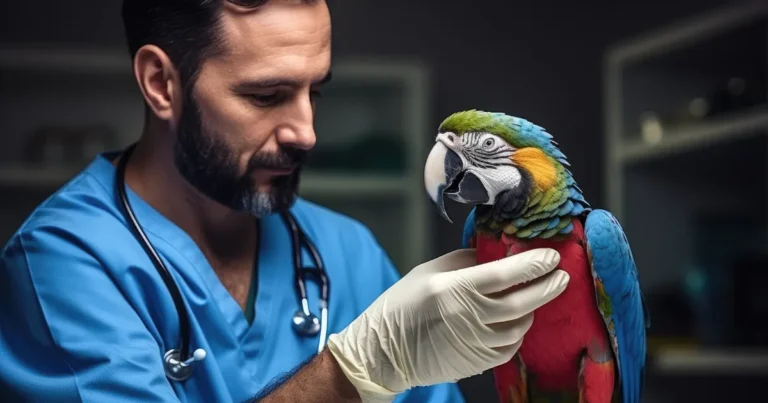
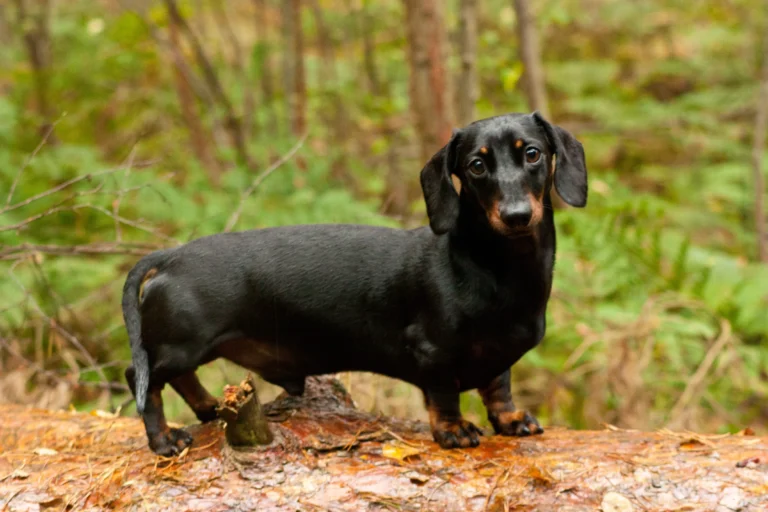
Leave a Comment